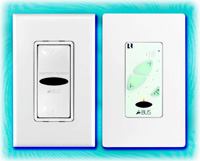Electronics integrators like Tim Wilcox would rather their customers didn’t know just how easy an A-BUS distributed audio system is to install. The multi-source, multi-zone music system does much of what only expensive, hard-to-wire audio systems could deliver in the past. “It’s super-intuitive for the end user and it’s pretty easy to install, but it works like magic,” he says.
For integration companies like Wilcox’s JRE Corp., the A-BUS system allows them to bring whole-house audio efficiently and reliably to a broader segment of the population. “Our focus is production home building,” Wilcox says, “so we need solutions that allow us to get in and out with as minimal amount of callbacks as possible. A-BUS improves our world because we don’t get calls for support.”
Developed by Australia-based Leisure-Tech Electronics, A-BUS is licensed in the U.S. to structured wiring and electronics firms including Russound, Channel Vision, Honeywell, Eaton, USTec, Harman Kardon, Jamo, Phase Technology, DSC, MTX, Integra, Cambridge Audio, and Opus. A-BUS products are sold in both the custom and retail channels, and USTec integrates A-BUS as part of its structured wiring portfolio.
The heart of the system is the A-BUS hub—either an audio/video receiver or a dedicated module—which connects via Cat 5 to amplified keypads in other rooms. The hub connects to the source components—including their infrared receivers—allowing for remote control operation of the equipment from keypads in other rooms. Keypads also pack on-board digital amplifiers, which don’t give off excess heat the way analog amplifiers do, allowing for much smaller designs that fit in the wall. Keypads connect to the speakers using standard speaker wire. Homeowners select sources and control volume at the keypad or by using a handheld remote control to send commands through a keypad’s IR sensor.
Positioning the amplifiers in each room, closer to the speakers, has two benefits. One, it cuts down on the number of cables that must be strung from the equipment head-end to the speakers. The Cat 5 cable handles what used to be accomplished with four-conductor speaker wire, a control cable, and AC wiring. Two, the shorter the distance the audio signals have to travel, the less signal loss along the way, and that translates to better sound.
For JRE Corp., which works with production builders, the A-BUS platform provides a more high-tech audio option. “Before A-BUS, we just did volume controls to speakers, and we’d leave the client a bundle of wires at their media niche that they never knew what to do with,” Wilcox says. The wires stayed that way because going back to tailor a system to homeowners’ needs would turn a production job into a custom installation. “With A-BUS, because it finishes out and trims the same way every time, we can put in a better solution for the homeowner,” he says.
A basic A-BUS system, the kind typically found in retail A/V receivers, distributes one source of audio to one or more rooms. Multi-source A-BUS systems, sold by Russound and other manufacturers that cater to the custom market, distribute up to four sources—say CD, satellite radio, FM radio, and iPod—to an unlimited number of rooms.
At JRE, a typical installation comprises four zones, including one zone of outside coverage. In the Southern California market, a four-zone A-BUS system runs about $3,400 installed to the homeowner with a builder margin of roughly 50 percent.
A-BUS is the second solution in Russound’s distributed audio lineup. The first A-BUS licensee in the U.S., Russound positions its A-BUS product between a starter remote-control based infrared system at the entry level and higher-end keypad solutions that provide detailed system status and feedback.



